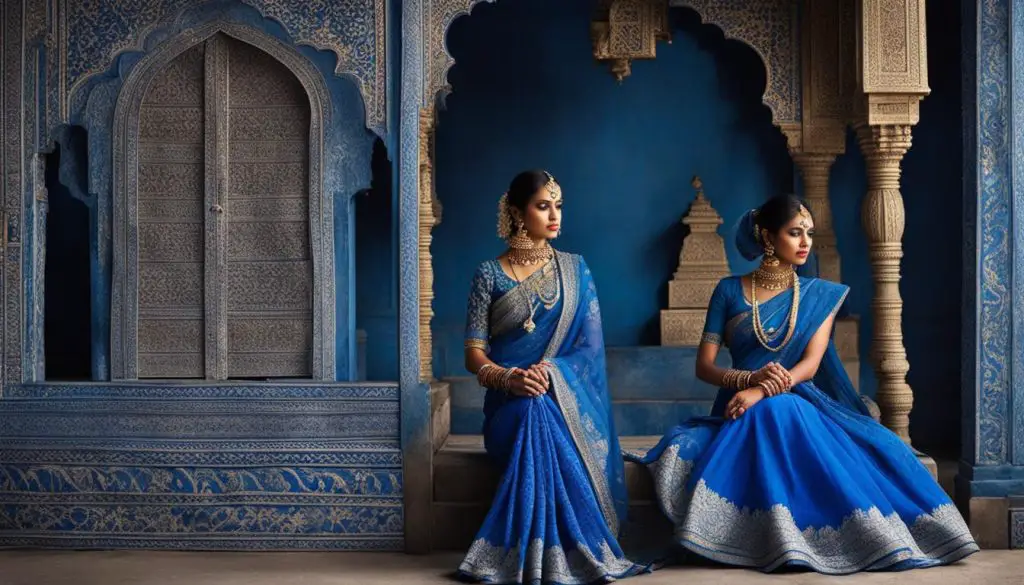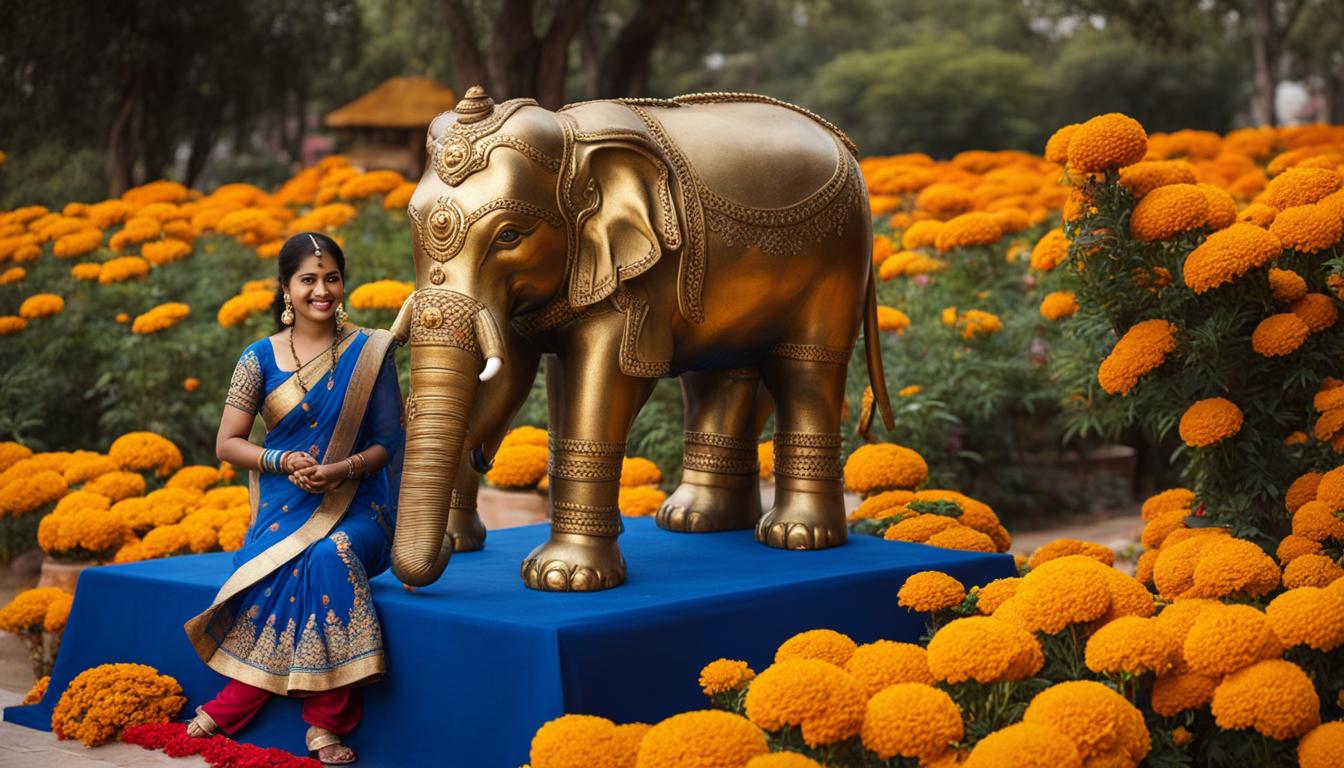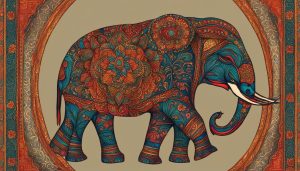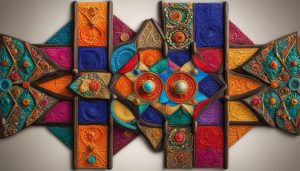In India, color symbolism runs deep, intertwined with cultural beliefs and traditions. One color that has sparked curiosity and debate is blue. From the significance in Indian culture to its symbolism in Hindu traditions, blue holds a multifaceted meaning. Let’s delve into the fascinating world of blue and discover if it truly brings good luck in India.
Contents
- 1 The Significance of Blue in Indian Traditions
- 2 Blue Color Symbolism in Hinduism
- 3 Conclusion
- 4 FAQ
- 4.1 Is blue considered a good luck color in India?
- 4.2 What is the significance of blue in Indian traditions?
- 4.3 Does blue have symbolism in Hinduism?
- 4.4 How is blue depicted in Indian art and religion?
- 4.5 How does blue relate to Indian society and culture?
- 4.6 Is there a definitive answer to whether blue is a good luck color in India?
- 5 Source Links
Key Takeaways:
- Blue color symbolism in India is diverse and varies among different groups and individuals.
- Some avoid wearing blue due to its association with harmful dyes, while others believe it can ward off the evil eye.
- Blue is strongly linked to Lord Krishna, symbolizing transcendence and infinity.
- Indian traditions and customs influence the perception of blue as a lucky color.
- The cultural meaning of blue in India is complex and influenced by beliefs, customs, and traditions.
The Significance of Blue in Indian Traditions
In Indian traditions, the color blue holds diverse beliefs and superstitions. Some people believe that blue brings good luck and offers protection against the evil eye. They wear blue clothing or accessories to ward off negative energy and attract positive vibes into their lives. On the other hand, there are those who consider blue to be inauspicious, primarily due to the dye used to create the color.
Blue is deeply rooted in Hinduism and is associated with Lord Krishna, one of the most revered deities. Lord Krishna is often depicted with blue skin, symbolizing transcendence and infinite reality. His followers view the color blue as sacred and auspicious, representing divinity, love, and spirituality.
Blue is considered to be the color of Krishna, who is highly worshipped in Hinduism. The blue color symbolizes his divine essence and his ability to transcend the limitations of the mortal world.
It’s important to note that the significance of blue in Indian traditions varies among different groups and individuals. While some embrace the positive symbolism of the color, others may hold beliefs or superstitions that discourage its use. The cultural meaning of blue in India is multifaceted, influenced by customs, traditions, and personal interpretations.
The Role of Blue in Indian Festivals
Blue also plays a prominent role in Indian festivals, where it is often used in decorations, clothing, and rituals. During the festival of Holi, for example, people throw vibrant colored powders, including blue, at each other to celebrate the arrival of spring and the triumph of good over evil.
Overall, the significance of blue in Indian traditions is deeply intertwined with cultural beliefs, mythology, and the worship of deities like Lord Krishna. It is a color that evokes strong emotions and carries both positive and negative connotations, making it an intriguing aspect of Indian culture.
Blue Color Symbolism in Hinduism
In Hinduism, the color blue holds significant symbolism. It is often associated with Lord Krishna, one of the most revered deities in Hindu mythology. Lord Krishna is depicted with a blue complexion, representing the transcendence of divinity and the infinite nature of the universe. The color blue is believed to capture the essence of a divine being reduced to a finite form.
Furthermore, blue is also connected to the sky and the ocean, both of which are vast and seemingly boundless. The color symbolizes infinity, depth, and the limitless possibilities of life. It represents the vastness of the universe and our connection to something greater than ourselves. The cultural meaning of blue in India is multifaceted, with different interpretations and beliefs among various communities and individuals.
While some groups in India choose to avoid wearing blue, associating it with harmful dyes, others consider blue to be an auspicious color. They believe that blue can bring luck, protection, and blessings. These contrasting beliefs reflect the diversity and complexity of Indian culture, where colors hold deep cultural and spiritual significance.
The Symbolic Significance of Blue in Hinduism
Blue color symbolism in Hinduism is a topic of great importance and fascination. Lord Krishna’s blue complexion represents his divine nature and his ability to transcend worldly limitations. It serves as a reminder of the infinite possibilities that exist within each individual and the universe at large. The color blue is a visual representation of the spiritual journey towards enlightenment and self-realization.
Moreover, the association of blue with the sky and the ocean further enhances its symbolism. The sky is vast and ever-expanding, representing the limitless potential and boundless nature of existence. The ocean, with its deep blue hue, is a reservoir of life and mystery, serving as a metaphor for the depths of consciousness and the unfathomable mysteries of the universe.
Blue Color in Indian Art and Architecture
The significance of blue in Hinduism is not only limited to religious beliefs but also permeates Indian art and architecture. In religious art, the blue form of Lord Krishna, adorned in yellow robes, is a common depiction. This portrayal emphasizes the divine beauty and spiritual essence of Lord Krishna, creating a visual representation of the transcendence and infinite reality that he embodies.
Furthermore, blue is often used in the design of temples and sacred spaces in Indian architecture. The presence of blue is believed to create a serene and calming atmosphere, facilitating a deeper connection with the divine. It is seen as a color that promotes spiritual growth, introspection, and inner peace.
| Blue Color Symbolism in Hinduism | Meaning |
|---|---|
| Association with Lord Krishna | Representation of the transcendence and infinite reality |
| Connection to the sky and the ocean | Symbolizes infinity, vastness, and boundlessness |
| Vibrant presence in religious art | Depicts the divine beauty and spiritual essence |
| Use in architectural design | Creates a serene and calming atmosphere |
Blue color symbolism in Hinduism encompasses spirituality, mysticism, and the eternal quest for self-realization. It highlights the profound connection between the human experience and the divine, inviting individuals to explore the depths of their consciousness and seek enlightenment.

Conclusion
The question of whether blue is a good luck color in India has no definitive answer. It primarily depends on individual beliefs, customs, and traditions. While some people consider blue to be an auspicious color that brings good luck, others avoid it due to its association with harmful dyes.
Blue holds significant symbolism in Indian culture, particularly in Hinduism. Lord Krishna, with his blue complexion, represents the transcendent and infinite reality. Blue is also associated with the vastness of the sky and the ocean, symbolizing infinity and depth.
The cultural meaning of blue in India is complex and varies among different groups and individuals. Some Brahmins may avoid wearing blue, while others wear it to ward off the evil eye. Ultimately, the significance of blue in Indian society and culture reflects the diverse beliefs and customs that shape the perception of this color.
FAQ
Is blue considered a good luck color in India?
The perception of blue as a good luck color in India varies among different individuals and communities.
What is the significance of blue in Indian traditions?
Blue holds different meanings in Indian society and culture, influenced by beliefs, customs, and traditions.
Does blue have symbolism in Hinduism?
Yes, blue is prominently featured in Hinduism and is associated with Lord Krishna and the transcendent reality.
How is blue depicted in Indian art and religion?
Blue is prominently featured in Indian art and is commonly associated with Lord Krishna, symbolizing the transcendent reality.
How does blue relate to Indian society and culture?
Blue holds different meanings in Indian society and culture, with some groups considering it inauspicious and others finding it auspicious or protective.
Is there a definitive answer to whether blue is a good luck color in India?
No, it depends on individual beliefs, customs, and traditions.






